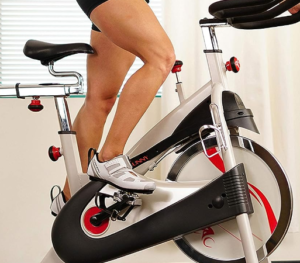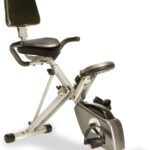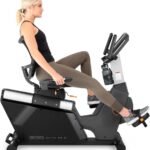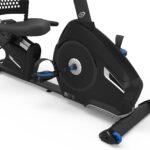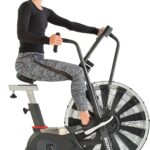Pedaling is the foundation of every cycling activity, whether outdoors on a standard bicycle or indoors on a spin bike. When you pedal, you are moving the bike’s wheel (or, in the case of a spin bike, the flywheel), and exercising various muscles throughout your body. How you cycle in spinning workouts, whether forward or backward, can greatly impact the results.
You can target different muscle groups, improve your cycling technique, and add variation to your workouts by shifting the direction of your pedaling. For instance, while forward pedaling mainly focuses on the quadriceps, pedaling backward on a spin bike can emphasize the hamstrings and glutes more.
Can you pedal backward on a spin bike?
Yes, you can pedal backward on a spin bike. Compared to standard forward pedaling, which stresses the quadriceps, this method works different muscle groups, particularly the hamstrings and glutes. Backward pedaling can increase muscular symmetry, improve coordination, and provide a fun twist on traditional spinning routines.
To avoid discomfort, ensure your spin bike is adjusted at an appropriate resistance level before using this technique. Maintaining proper posture and foot placement is also critical for safety. Incorporating backward cycling in moderation and regular forward pedaling will help you get the most out of your indoor cycling sessions. When trying new fitness routines, always prioritize comfort and attention to your body’s instincts.
Advantages of Pedaling Backwards on a Spin Bike
Strengthening and Toning Different Muscle Groups
One of the primary advantages of pedaling backward is that it focuses on a specific set of muscles. While standard forward cycling focuses on the quadriceps or the front muscles of your legs, reverse cycling targets your hamstrings, calves, and glutes. This change in muscular engagement aids in the development of a balanced leg.
Improvement in Muscle Symmetry and Balancing Leg Strength
Have you ever felt that one leg is stronger or more dominant than the other? Many fitness enthusiasts are concerned about this. This can be solved by pedaling backward. Reverse cycling challenges the muscles differently, promoting balanced strength between both legs and preventing physical imbalances.
Enhancing Cardiovascular Endurance and Boosting Calorie Burn
Surprisingly, pedaling in reverse benefits more than just the muscles. It also presents a distinct cardiovascular problem. Because the action is less habitual than forward cycling, the heart and lungs work harder, resulting in more calorie burn and improved cardiovascular endurance.
Increasing Agility and Coordination in Cycling Routines
Changing the direction of your pedaling might give a new twist to your regular workouts. This new activity can improve agility and coordination as your body adjusts to the novel cycle pattern. This can improve overall riding skills, even when you return to more traditional forward pedaling.
Read: Exercise Bike Magnetic Vs Belt Drive
How to Safely Pedal Backwards on a Spin Bike
Proper Positioning: Seat Height, Handlebar Adjustments, and Posture
Before entering the reverse cycling world, make sure your spin bike is properly adjusted. The seat height should be adjusted such that your knee is slightly bent when your foot is at the bottom of the pedal stroke. Handlebars should be positioned such that you can reach them comfortably without hurting your back or shoulders. Always remember that appropriate posture is essential! Maintain a straight back, engage your core, and distribute your weight equally between the saddle and handlebars.
Starting with Slow Rotations to Get the Feel
Don’t rush if you’re new to pedaling backward. Begin with gentle, controlled spins to become acquainted with the movement. This gradual technique will help you acquire essential muscle memory while avoiding strain.
Ensuring Adequate Resistance to Avoid Strain or Potential Injury
When it comes to reverse pedaling, resistance is your friend. Too little resistance may cause you to cycle too quickly, perhaps causing strain. Excessive resistance, on the other hand, might be taxing on your joints. Aim for a reasonable level of resistance that allows for smooth but demanding backward rotations.
Paying Attention to Foot Placement and Using Clip-in Shoes or Straps
Cycling relies heavily on your feet, especially while pedaling backward. Check that they are securely attached to the pedals. Use the straps on your spin bike to keep your feet from slipping. Consider investing in clip-on shoes for an even greater experience. These specially designed shoes connect directly to the pedals, providing better stability and power transfer.
Read: Exercise Bike or Gym Membership
Common Mistakes to Avoid
Over-Pedaling Without Proper Resistance
One of the most common mistakes that spin cycle users, especially beginners, make is pedaling too rapidly without enough resistance. This can reduce not just the efficacy of your workout but also the chance of injury, especially while pedaling backward. Make sure there’s adequate resistance to allow for a smooth pedal stroke.
Incorrect Seat or Handlebar Positioning Leading to Discomfort or Injury
It’s not simply about getting on the bike and getting started. It is critical to place the seat and handlebars correctly. Incorrect alignment may cause discomfort in your lower back, knees, or neck regions. Check and adjust your bike settings regularly to meet your body’s needs.
Not Engaging the Core or Maintaining a Straight Back
When you’re on a spin bike, your core is your powerhouse. Slouching or forgetting to engage it can result in back pain or decreased workout efficiency. Whether pedaling forward or backward, keep your core engaged and sit tall.
Neglecting the Importance of Warm-Up and Cool-Down
Just like any other activity, jumping right into a high-intensity spinning workout without a sufficient warm-up will shock your muscles. Similarly, abruptly stopping without a cool-down might cause muscle stiffness. Include a leisurely warm-up with forward pedaling and a calm cool-down with both forward and backward pedaling.
Avoiding Feedback or Skipping Regular Maintenance
Finally, pay attention to your body and your bike. If something doesn’t feel right, it probably is. Inspect your spin cycle regularly for wear and tear, and whether you’re in a class or using a spinning app, don’t be afraid to ask for feedback.
Read: Is Exercise Bike Good for Knees?
Conclusion
Mastering pedaling backward on a spin bike can take your fitness journey to the next level by targeting different muscle groups and improving overall riding coordination. While it offers distinct benefits ranging from balanced leg strength to higher calorie burn, it is important to approach it with the proper skills and awareness.
You may ensure a safe and efficient reverse pedaling experience by knowing frequent faults and focusing on proper posture, resistance, and equipment maintenance. Listening to your body and making required modifications is essential in any workout regimen. Embrace this dynamic twist in your spinning workouts and get the numerous health and well-being advantages.
